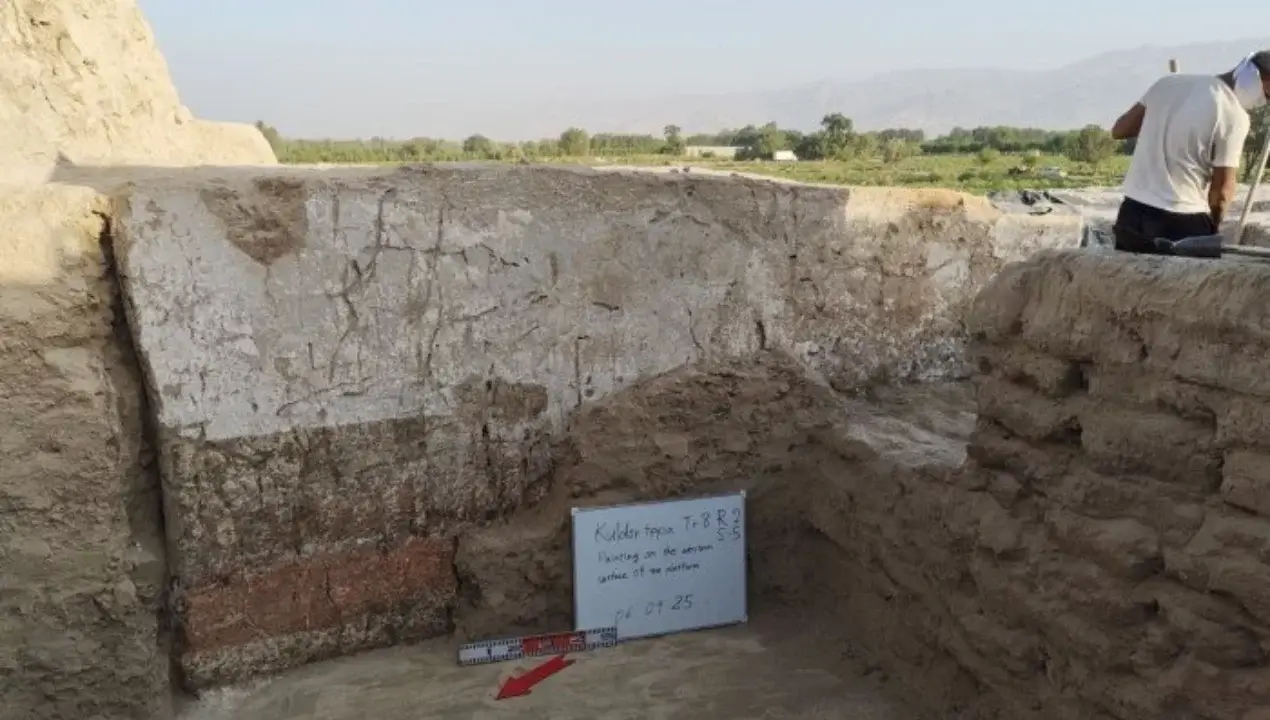
Scientific research at the Kuldortepa archaeological site, located in the Urgut district of the Samarkand region, is revealing new historical secrets. Archaeologists have managed to identify the remains of an early medieval temple here. These findings are of great importance in the study of the history of not only the local, but also the entire region.
During the excavations, the temple's ceremonial hall, columned portico, and corridor rooms were discovered. Archaeologists note the presence of still-preserved decorations on the walls of the room. The walls are decorated with geometric patterns in red and black on a white background, which is considered a unique example of the architecture of this period.
One of the most interesting finds is a Christmas tree column, which reaches a length of about 4.75 meters. Researchers also found mirrors produced during the Han Dynasty of China and coins associated with the name of the Sogdian ruler Ukkurt Chamuk. These finds confirm that Kuldortepa played an important role as a center of trade and cultural relations at that time.
According to sources, Kuldortepa has long been mentioned as the center of a rustoq. In Chinese written sources, this place is recorded as Mi or Mi-mohe, while in Arabic-Persian literature it is known as Maymurgh. This indicates its close connection with the civilizations of different peoples.
Read “Zamin” on Telegram!Users of Меҳмон are not allowed to comment this publication.














